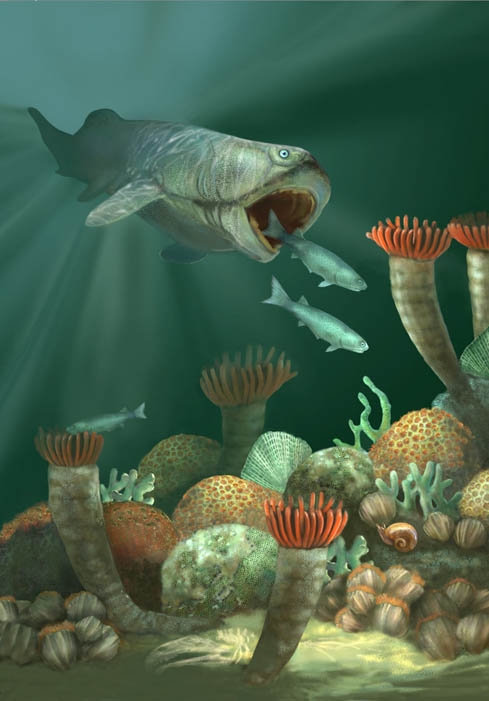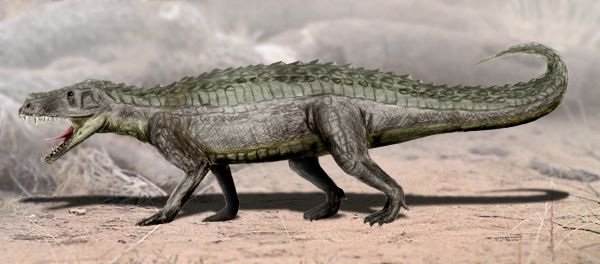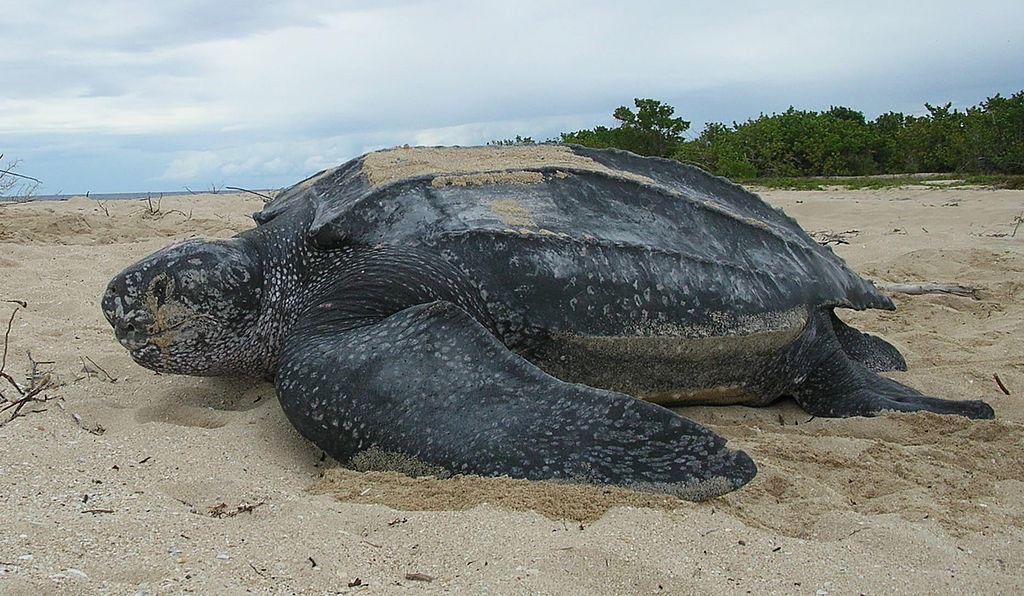 |
| Some of the Quaternary Megafauna; Source. |
The megafauna were more vulnerable to extinction than other animals, which is in part why they suffered such extreme losses, whether they be from humans or climate. In general, animals of a large size are more vulnerable to extinctions due to larger ranges and lower population densities. Johnson argued, however, that is was not size but a slow life history (slow reproductive rates and few young) that made the megafauna more susceptible to extinctions. Due to the fact that they have long lives (and therefore later sexual maturity) and relatively few young, they are more vulnerable to sudden changes in climate and habitat because it takes longer for generations to pass and therefore longer for the species to adapt to these changes. This supports climate causes over human, as hunting hypotheses focus on body-size. Johnson also found that those alpine, arboreal and nocturnal species with lower reproductive rates experienced less extinctions, likely due to their reduced exposure to humans but there is no clear link to climate.
Barnosky et al. conducted a review of the evidence from a variety of fields. They found that in some areas, such as Eurasia and North America there was strong evidence that humans contributed to the extinctions but also that pronounced climate change had a significant role. In Australia, humans were almost exclusively responsible for the loss of 21 genera whilst there was scarce evidence for the influence of climate. In other areas of the world, South America and Africa, there was not sufficient evidence to make a judgement on the causes of the extinctions, despite the fact that South America experienced the greatest species loss of any continent. In Africa, there is a very low number of genera lost in comparison to other continents. Why? This is yet another unanswered question but we think it is due to coevolution of humans alongside the megafauna.
 |
| Assessment of causes of extinction on each continent; Source. |
There are various hypotheses for human caused extinctions, but I will briefly discuss the most common ideas.
1. Blitzkrieg
Whilst this is now considered somewhat outdated by most scientists, one of the first ideas about the loss of megafauna was that humans had hunted them to extinction at such a rapid rate that their populations did not have a chance to recover. First proposed by Martin, the hypothesis assumes that as the animals had not encountered humans before, they would naively not be afraid of them and therefore easily hunted. Martin sought to provide explanation for the fact that there were so few archaeological sites containing extinct megafaunal remains, as the hypothesis put the extinctions within the space of 500-1000 years so interactions between humans and extinct species would have been brief. There are, however, a number of issues with this hypothesis. There is a severe lack of archaeological sites where large mammals are associated with stone tools and Barnosky et al state that when the entire breadth of climatic and archaeological evidence is considered, that blitzkrieg scenarios can be firmly rejected in western Europe, Siberia, Alaska, and probably Australia and central North America. Additionally, Wroe et al. among others argued that prey naivete would not have been sufficient for blitzkreig, as this is really not how animals work - prey quickly learn to flee from new predators. Whilst we know that hunting and predation by humans did have an impact on populations, and of certain species in particular, we know fairly certainly that it was not a blitzkrieg.
2.Sitzkrieg
The wittily named Sitzkrieg hypothesis refers to the slower, sometimes indirect impacts humans would have had on megafaunal populations other than directly hunting them. This includes habitat loss and fragmentation, use of fire, and the introduction of foreign species and diseases. This has proven difficult to quantify as, for example, we cannot pinpoint whether charcoal comes from human or natural fire events and it is also difficult to know the extent of habitat loss. We have seen in island communities that 'sitzkrieg' style events have caused extinctions through multiple effects and synergy with hunting. For example, black rats as a human introduced species have caused extirpations in island communities, but this has not been replicated on mainland. Some suggest a hyper-disease hypothesis in which extinction is a result of hyper-virulent diseases to which the native species have no resistance. Again, there is a lack of evidence to support this - we do not actually know of any such extremely lethal cross species pathogens, for example. In their review, Koch and Barnosky find that none of the indirect sitzkrieg models make strong predictions regarding the megafaunal extinctions. Of all, the factors, habitat alteration seems the most likely culprit but it is unlikely any sitzkrieg parameters were dominant causes of the extinctions.
 |
| Hyper-disease, plausible or silly?; Source. |
As for environmental hypotheses, climate change is the prevailing theory but there are also some other weird ideas out there.
1. Climate change
Throughout the last 50kyrs, there has been a lot of fluctuation between warm and cold events in the climate, known as Dansgaard–Oeschger (D-O) events (rapid warming events) and Heinrich events (cold events). These events are likely to have caused abrupt shifts in temperature and precipitation which would destabilise habitats and species ranges. In a recent paper, Cooper et al identified that many extinctions seem to coincide with D-O events, shown in the graph below. Additionally, Gill et al found that Sporormiella (a dung fungus associated with large herbivores) declines in correlation with D-O events and overall gradually throughout the period, contrary to the aforementioned blitzkrieg ideas. The other trend we see is a gradual warming from the last glacial maximum (26.5kya) to the Holocene (11 kya), after which temperatures remain relatively stable. This warming would have caused major ecological changes, in particular the reduction of tundra biome and taiga forests reaching further north. Some species, such as mammoths, were not adapted to these warmer, wetter forests and would have suffered from a decreased range and were likely unable to keep up with a shifting habitat due to their large size and slow reproductive cycles.
 |
| Light grey bars represent interstadial warming events and have a marked association with extinctions; Source |
2. A comet?
The Younger Dryas impact hypothesis suggests that a barrage of meteorites hit the ice sheet in North America and created instability and caused the onset of the Younger Dryas. However, this is widely discredited as we have evidence (such as Gill's sporormiella) that tells us the megafaunal extinctions were not clustered around or after 12.9kya when the impact occurred. The event itself is disputed due to lack of typical bolide indicators found in sediments from that time. So, not really anything to write home about, but just letting you know what's out there. ;)
-------------------------------------------------------------------------
In summary, as shown in the original graph by Barnosky et al, the evidence points towards a mix of human impacts with a background of climatic events as the drivers of megafaunal extinctions across the Northern Hemisphere Whilst the jury is still out for most of the Southern Hemisphere, Australian extinctions appear to be very closely related to human impacts, with little climatic correlation. We have a good understanding of what happened to many of these genera, as shown by the number of green circles representing 'robust evidence' in Barnosky's graph, but there is still room for improvement, particularly for understanding what happened in South America and Africa. It would be interesting to hear your opinions on all this, particularly if you disagree with anything I've said! As always, questions and debate and welcomed in the comments section.
















